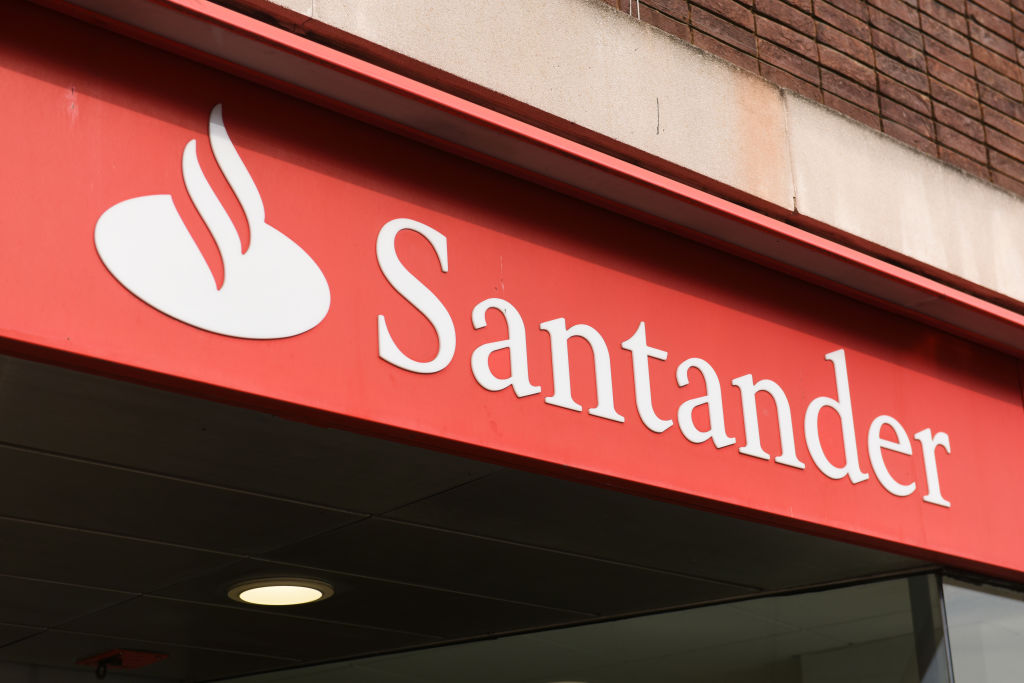Santander Edge Saver: New market-leading easy-access account comes with some hurdles
Savers with the Santander Edge Saver can beat inflation, but there are certain hurdles you need to clear.


Savers can now beat inflation with an easy-access account, after Santander improved the returns on offer from its Edge Saver, though there is a catch which means it won’t be right for everyone.
With inflation running so persistently high for the last year, it has been all but impossible for savers to obtain an inflation-beating return from the money they stash away. As a result, even with the increasingly good interest rates on offer from savings accounts as bank base rate has risen, savers have seen the value of their pots lose value in real terms.
This has changed, though, with the drop in the inflation rate and Santander revamping the interest rates paid through its Edge Saver account. However, there are some key aspects of the account which means it won’t be right for everyone.
MoneyWeek
Subscribe to MoneyWeek today and get your first six magazine issues absolutely FREE

Sign up to Money Morning
Don't miss the latest investment and personal finances news, market analysis, plus money-saving tips with our free twice-daily newsletter
Don't miss the latest investment and personal finances news, market analysis, plus money-saving tips with our free twice-daily newsletter
What can I get from the Santander Edge Saver account?
The Santander Edge Saver (Issue 1) is an easy-access savings account, making it a suitable option for money that you want to be able to get your hands on quickly.
The bank has hiked the interest paid on the account, meaning it now pays 7%. That’s higher than inflation now, with the consumer prices index (CPI) measurement of inflation having dropped to 6.8% in July 2023.
One important fact to note with the Edge Saver is that the rate includes a 2.5% bonus for the first 12 months. As a result, the returns on offer will drop a year down the line. Before the rate drops, savers may need to review whether a better rate of return can be obtained by moving their money elsewhere.
That’s not the only detail to be aware of. The savings rate for the Santander Edge Saver account is limited to the first £4,000 you deposit. Anything you save above that limit earns no interest at all, so savers with larger pots will need to find a separate home for the rest of their cash.
How to get the Santander Edge Saver
There's a further obstacle for savers hoping to get the Santander Edge Saver account – it isn’t open to everyone.
The Edge Saver is limited to customers who hold a Santander Edge current account, so if you want to benefit from an inflation-beating return on your savings, you may need to change your current account in the process.
The Santander Edge current account perks
- No foreign travel charges: there are no charges for making withdrawals or for spending with your debit card when overseas. That makes the Santander Edge one of the better options if you want to rely on a debit or credit card when travelling abroad.
- Cashback on direct debit spending: The Santander Edge account is a cashback current account, allowing you to get something back when you spend money. You receive 1% cashback on certain household bills that are paid by direct debit, such as council tax, your mobile phone bill, your water bill and your energy bill. Cashback is capped at a maximum of £10 a month.
- Cashback on essential spending: Account holders also earn cashback when they use their debit card for what Santander classes as ‘essential spend’. That means spending money at supermarkets and on travel spending – which includes fuel, electric charging and tickets for public transport travel. Again, you can earn 1% cashback, which is capped at £10 a month.
If you maximise the cashback from direct debits and debit card spending on essentials, you could bring in a maximum of £240 a year with the Santander Edge account.
In order to qualify for the various perks of the Santander Edge account, you will need to pay in at least £500 a month and have two active direct debits.
Is the Santander Edge Saver account right for me?
The fact that the Edge Saver beats inflation is a big deal. It’s been a long time since savers had an account that managed that, particularly one where savers have easy access to their money rather than having to lock it away for years at a time.
What’s more, if inflation continues its downward trajectory then the rewards on offer from the Santander Edge Saver will only become more valuable in the months ahead. To put that rate into context, its nearest rivals in the easy-access space currently pay around 4.8%.
However, it’s impossible to ignore the fact that there are some real negatives that savers will need to navigate around in order to benefit from the Edge Saver.
First and foremost, just to get the account you may need to switch your bank account, and while the Santander Edge current account is a competitive cashback current account, there will be some who are unwilling to give up their existing bank account.
There is also the £4,000 cap on deposits, meaning that savers can only receive the 7% interest rate on a relatively small amount of money.
Given this, the Edge Saver will be well worth considering, especially if you're only looking to save a small amount, or if you already have an Edge current account. For bigger savers, it is unlikely to hit the mark.
Join us at the MoneyWeek Summit on 29.09.2023 at etc.venues St Paul's, London.
Tickets are on sale at www.moneyweeksummit.com
MoneyWeek subscribers receive a 25% discount.
Get the latest financial news, insights and expert analysis from our award-winning MoneyWeek team, to help you understand what really matters when it comes to your finances.
John Fitzsimons has been writing about finance since 2007, and is a former editor of Mortgage Solutions and loveMONEY. Since going freelance in 2016 he has written for publications including The Sunday Times, The Mirror, The Sun, The Daily Mail and Forbes, and is committed to helping readers make more informed decisions about their money.
-
 Why pension transfers are so tricky
Why pension transfers are so trickyInvestors could lose out when they do a pension transfer, as the process is fraught with risk and requires advice, says David Prosser
-
 The political economy of Clarkson’s Farm
The political economy of Clarkson’s FarmOpinion Clarkson’s Farm is an amusing TV show that proves to be an insightful portrayal of political and economic life, says Stuart Watkins

